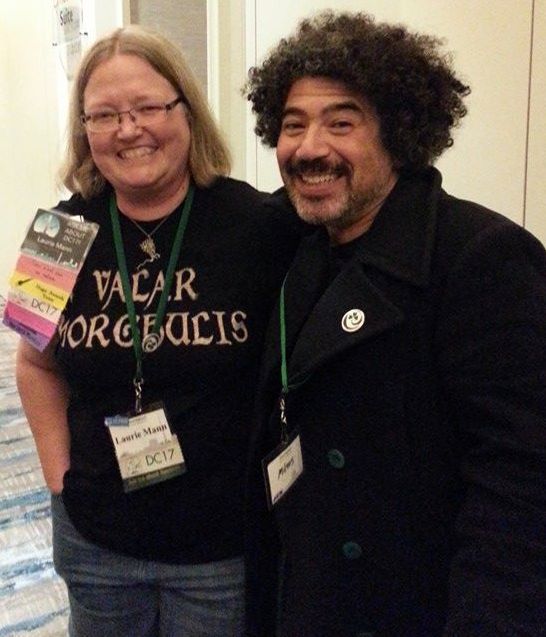Domestic Violence - The Police Step In....
Site Map for Women's Resources
Two brief articles:
Facts About Domestic Abuse and Dating Violence
Prevention: A New Approach to Domestic Violence
Facts About Domestic Abuse and Dating Violence
by Karen Gordon
'
Domestic or dating violence is a crime. Those convicted can
be sent to jail, fined, imprisoned, or compelled to attend an
abuse prevention or counseling program.
High school and college women are more likely to be abused and
assaulted by someone they know than by a stranger.
The use of alcohol or drugs, by both the victim and the offender,
are often factors in domestic violence cases.
Large numbers of young adults are affected by relationship violence.
If violence occurs once in a dating relationship, it is likely
to occur again.
Jealousy and uncontrollable anger are perceived by victims to
be common causes of violence.
Intimidation, the intention of striking fear into the other
person or forcing the other person to do something, is a major
motive for violence by males.
People misinterpret violent acts as signifying affection.
Prevention: A New Approach to Domestic Violence
Reprinted from Police Practice, September 1995
by William D. Baker, J.D.
The criminal justice system's response to domestic violence has
evolved dramatically during the past two decades. Historically,
when responding to domestic dispute calls, law enforcement
officers could do little more than separate spouses and wait for
tempers to cool.
By the mid-1980s, changing social standards led to more vigorous
enforcement policies. In Massachusetts, as in many states, these
policies resulted in mandatory arrest statutes,1 domestic
violence firearm-confiscation statutes,2 restraining order
registries,3 and enhanced penalties for convicted batterers.4
These measures constitute an important step forward in addressing
one of the most recurrent problems that confronts law
enforcement. However, these policies share a characteristic that
limits their effectiveness in actually curtailing domestic
violence. As reactive measures, they can be used only after an
incident occurs. Thus, the progressive policies adopted in recent
years have done little to prevent new cases of abuse or to reduce
the number of domestic violence calls handled by the police.
Prevention as a Goal
Law enforcement officials often become frustrated when, in the
wake of a domestic violence-related homicide, media headlines
proclaim, "The System Fails Again." It is difficult to accept
such criticism when the criminal justice system mainly responds
after a crisis has occurred. While a crisis intervention stance
appropriately takes as its first priority the safety of victims,
such an approach risks ignoring the importance of primary
prevention.
In 1991, the Massachusetts Criminal Justice Training Council and
the Framingham Police Department joined with local educators and
victim advocates to create a proactive program that addresses the
root causes of domestic violence. The Violence Prevention Program
stresses prevention rather than reaction. It has emerged as a
unique method to address critical risk factors, such as
gender-role stereotypes and sexism, that lead to domestic
violence.
The Violence Prevention Program
The Violence Prevention Program educates young people about
domestic violence and provides them with skills to help them
avoid destructive behavior. The program targets students in the
seventh and eighth grades.
Staff members of a local nonprofit shelter for battered women
structured the curriculum in five 1-hour blocks that can be
delivered in health classes as part of the regular school
curriculum. The program is intended to be taught by two-member
teams made up of a police officer and an educator. The ideal team
consists of a male teacher and a female officer, the reverse of
the common stereotype. Together, they can model respectful
behavior and effectively deal with the issue of gender-role
stereotyping.
Police administrators choose officers for the program based on
their demonstrated sensitivity to the issues of domestic
violence, as well as for their field experience, performance in
training and role-playing, and teaching ability. The immediate
goal of the program is to give the officers and educators a
visible, proactive role in preventing violence. The ultimate goal
is to reduce violence in intimate relationships.
Training the Trainers
Before the officers and educators begin to teach the program,
they receive special instruction on the subject of domestic
violence. A 3-day, train-the-trainer course focuses on the
dynamics of domestic violence. Professional counselors in the
areas of teen dating violence and battering conduct the training
sessions. Funds from a State grant cover the fees for the
counselors.
On the first day of instructor training, the participants learn
about cycles of violence and examine questions such as "Why do
men batter?" and "What makes women remain in abusive
relationships?" The second day of instruction focuses on program
curriculum. Participants go through the exercises, such as
formulating definitions for abuse and respect and listing the
attributes of respectful men and women. On the third day, the
officers and teachers deliver the curriculum through
role-playing.
In addition, training counselors often arrange for a presentation
by a victim or a batterer to give the teaching pairs an
opportunity to understand better the mindset of victims and
batterers. Guest lecturers drawn from a regional pool of medical
and domestic violence experts also may be called on to share
their insights with the participants. Near the conclusion of the
course, the counselors discuss what steps officers and educators
should take if they receive reports of domestic violence from the
students.
At the conclusion of the course, each pair of trainers returns to
their middle school in one of the 30 school districts throughout
the Commonwealth that participate in the program. To limit the
financial impact of the program on local communities, the
teaching pairs present the program in their school districts as
part of their regular assignments.
Teaching the Curriculum
The curriculum divides the five components of the program into
different sessions. The teaching pairs present the components in
1-hour classes generally delivered on five consecutive days.
In the first session, the teaching pair asks the students to
brainstorm examples of abusive and respectful behavior. Students
learn that abuse can be mental, emotional, verbal, sexual, or
physical. The session exposes students to different ideas about
what constitutes abuse and respect in the minds of both men and
women. The instructors' primary focus is to show that abuse and
respect must be defined by the person targeted by the behavior.
In the second session, instructors use commercial advertisements
and class discussion to explore the link between stereotypes and
violence. The teaching pair divides the students by sex and asks
them to create a list of attributes associated with being a
mature man or woman. The students discuss how men and women
should resolve conflicts and interact with one another. The
instructors then use the advertisements to demonstrate the
prevalence of stereotyping both in the media and society. They
explain that such stereotyping can lead to an imbalance of power
in relationships, which can breed violence and abuse.
In the third session, the instructors sensitize students to the
warning signs of domestic violence. They attempt to dispel some
of the myths about who batters and who might be victimized by
abuse. At this point, instructors often invite batterers and
victims to speak to the class. However, the instructors carefully
screen these guest speakers to ensure that their views are
consistent with the goals of the program.
Curriculum planners reserved the fourth and fifth sessions for
classes on topics chosen by the instructors. During these final
sessions, the teaching pairs may choose to offer instruction in
conflict resolution skills, discuss ways to end difficult
relationships, help the students create networks for peer
support, or advise students of community resources for victims
and batterers.
Student Reaction
Program coordinators measured the impact of the program by
evaluating changes in the attitudes of students who took the
course. Nearly 700 students completed surveys given before and
after the classes.
Seventy-eight percent of the females and 59 percent of the males
felt that the program would be useful in preventing violence in
current or future relationships. Nearly 92 percent of females and
84 percent of males identified school as an appropriate place to
learn about dealing with conflict in dating relationships.
The survey also indicated consistent improvement in the students'
ability to define and identify abusive behavior. When asked if
"guys should always be in control" of a relationship, 86 percent
of females answered no before the course; 90 percent answered no
after attending the classes. Sixty-five percent of the males
answered no to the same question before the course; 77 percent
said no after the course. When asked if calling a female a
derogatory term is abusive, 87 percent of the females answered
yes before the course; 93 percent answered yes after the course.
Seventy-eight percent of the males answered yes before the
course; 86 percent said yes after the course.
Conclusion
Domestic violence represents such a chronic problem for society
and law enforcement officers that it has become difficult to
envision new ways to address it. Certainly, the best scenario is
to prevent it from occurring in the first place.
The Violence Prevention Program delivers a proactive message of
mutual respect and conflict resolution to counter the mixed
signals and negative messages that young people often receive
regarding interpersonal relationships. The positive response of
the students who have completed the program indicates that they
value discussing social issues and want to learn appropriate
interpersonal skills.
The combined efforts of law enforcement, the educational system,
and private organizations help to make the program both practical
and successful. Through the Violence Prevention Program, police
officers team up with the community to address an issue before it
erupts into a problem.
Document: Domestic Violence - The Police Step In....
Web URL: http://dpsinfo.com/women/resources/preventingviolence.html
Updated: 03/21/2019 09:53:14 |
|  |
dpsinfo.com Site Map * * To Top of Page





